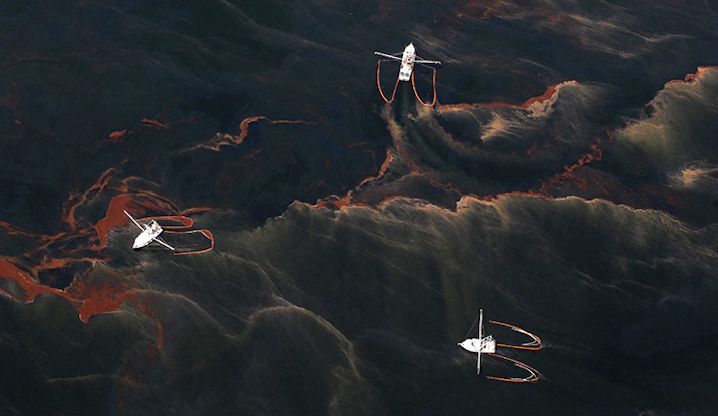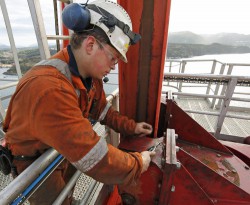I was walking on the beach at Bear Island on Sunday, Nov. 1, 1987, wondering why dozens of dolphins were surfing the waves and my two dogs kept sneezing. Later that afternoon, it was announced that a red tide had washed ashore, and public health officials began warning everyone not to eat seafood and to stay out of the water. The next day scientists identified a toxic dinoflagellate in our coastal waters, and they later figured out that this toxin had come from the Gulf Stream.

For the next 3.5 months, about 50 percent of the oyster beds and 95 percent of the clamming waters in the state were contaminated. Fear of going near the water had dramatic effects on tourism, although the industry was fortunate that the toxin had invaded during the off-season. The economic losses were conservatively estimated at $25 million according to NOAA researchers. The T&W Oyster Bar on N.C. 58 near Cape Carteret displayed a sign of the times—proclaiming it only served “Safe Out-of-State Seafood.”
Supporter Spotlight
The red tide proved that what goes on in the Gulf Stream can have a direct effect on our coast. The Gulf Stream is one of the natural wonders of our planet—it provides for rich fisheries throughout much of the world. It directly influences our climate, and since it sits on a hill of water about three feet high it even influences sea level on the N.C. coast. It is a natural treasure that is critically important to the health of our coast and the world’s oceans.
For all these reasons, it’s hard to comprehend why anyone would want to put the Gulf Stream and our coast at greater risk of catastrophic environmental damage. The recent announcement by the Obama administration to perhaps allow oil and gas rigs off our coast is worth losing sleep over. If someone screws up—which someone always does when it comes to oil and gas activities—it’s impossible to calculate the long-term environmental, economic and social consequences that will occur.
Most estimates are that oil and gas reserves off our coast are pretty small in terms of providing for the daily needs of the United States. However, there is probably enough energy off our coast to make the oil corporations and their stockholders a lot of money. That explains why the oil industry campaigns so hard to be allowed to drill.
The federal agencies will now evaluate if they should lease sites for drilling that would be at least 50 miles off the coast. That would put wells in deep, stormy waters near or in the Gulf Stream. Drilling rigs will closely resemble BP’s ill-fated Deepwater Horizon in terms of size, depth and risk.

Just recently both our U.S. Senators quoted an oil industry study of the economic benefits of drilling. That study is based upon the following assumptions: “Atlantic OCS drilling would be expected to begin in 2019, with an average of 30 wells drilled annually from 2017 to 2035 mostly in deep water. In the last five years of the forecast (2031-2035) an average of 66 wells would be expected to be drilled annually as the number of active projects grows and the need for development wells increase.” Doing the math, that works out to 780 wells lining our Atlantic waters.
Supporter Spotlight
And while they focus on the revenue side of oil and gas development, politicians aren’t talking about the huge expenditures associated with accommodating a big surge in temporary and permanent coastal residents. What are the costs associated with housing, schooling and taking care of this new workforce that comes and goes along our coast?

The actual amount of oil and gas, and where it will be brought ashore if it is discovered, has not been determined. However, most experts have long ago concluded that North Carolina won’t be a hotspot for employment related to this industry. Most insiders believe that the vast amount of support and staging for deep-water drilling will go to Norfolk and Charleston.
And even if everything occurred as drillers might dream, the economic returns on opening up our coastline to the petrochemical industry are at least a decade or more away. North Carolina has one of the most productive and healthy coastal ecosystems left in the United States, and it’s a real pity that we aren’t putting all our home-grown human energy and economic development resources into working to better tap the economic potential of our clean natural assets that are capable of making our existing coastal economy grow and prosper.
Our political leaders were united in their opposition to oil and gas drilling off the N.C. coast when it was proposed more than 25 years ago. Under the leadership of then governor and sailor Jim Martin, our coastal treasures and economy were protected. Now that this issue is being widely discussed and evaluated once again by coastal residents and visitors, and they are beginning to learn more about what is really being planned, it will be fascinating to watch which way the political winds blow our state’s leaders.







